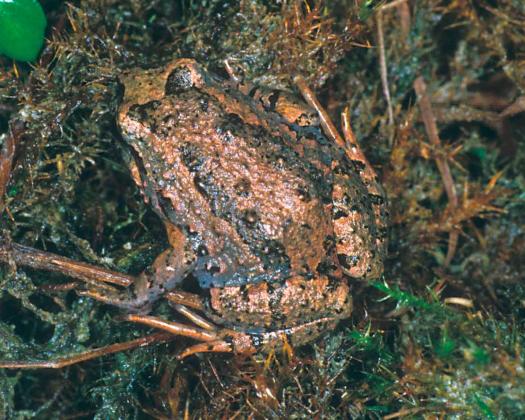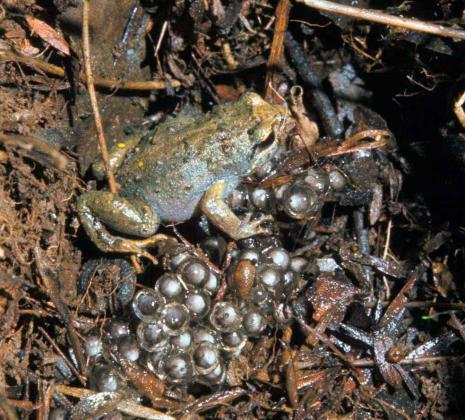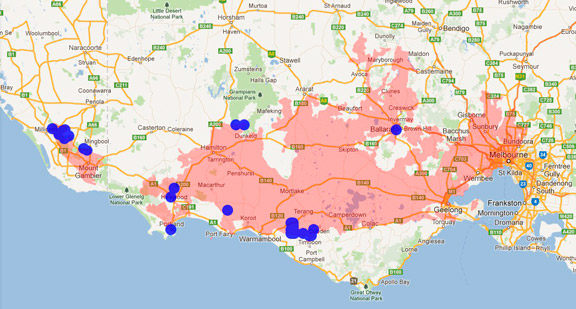A range of teacher professional learning programs will be developed to accompany the Biodiversity of the Western Volcanic Plains online outreach...


Smooth Frog
Geocrinia laevis
Breeding season: late summer and autumn. Females lay 80-150 pigmented eggs in moist leaf litter or within the bases of grass tussocks. The eggs stick together in clumps awaiting winter rainfall.
| Details | Description |
| Type | Amphibian |
| Group | Frog - Southern Frog |
| Other Common Names | Southern Smooth Froglet |
| Identifying Characteristics | |
| Distinctive Markings | Adults have smooth undersides, often with a pink patch in each armpit and groin. Pale pink/white mottling with dark brown markings on the underside of hind limbs. Rounded snout and indistinct tympanum. |
| Diet | Carnivore. Adults feed on invertebrates. |
| Habitat | Damp locations under leaf litter and debris in low lying vegetated areas. |
| Sounds | The identifying call is a long slow rattling or creaking "cre-e-e-e-e-e-e-e-ek cre-e-e-e-ek cre-e-ek cre-e-ek". |
| Taxonomy | |
| Phylum | Chordata |
| Class | Amphibia |
| Order | Anura |
| Family | Myobatrachidae |
| Genus | Geocrinia |
| Species | laevis |

Distribution maps indicate current and historic locations where species have been sighted.
Source: Atlas of Living Australia
| Conservation Status | |
| DEPI Advisory List | Not listed |
| FFG Act | Not listed |
| EPBC Act | Not listed |
The conservation status of species is listed within Victoria and Australia.
The Department of Environment and Primary Industry (DEPI) Advisory List consists of non-statutory advisory lists of rare or threatened flora and fauna within Victoria.
The Flora and Fauna Guarantee Act 1988 (FFG Act) lists threatened species in Victoria. Under the Act, an Action Statement is produced for each listed species.
The Environment Protection and Biodiversity Conservation Act 1999 (EPBC Act) is the Australian Government’s key piece of environmental legislation, listing nationally threatened native species and ecological communities.



